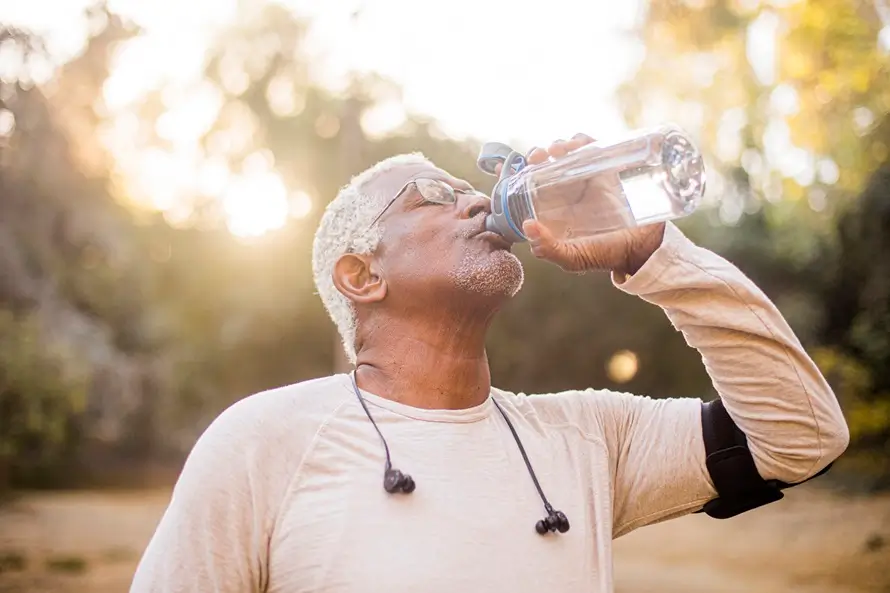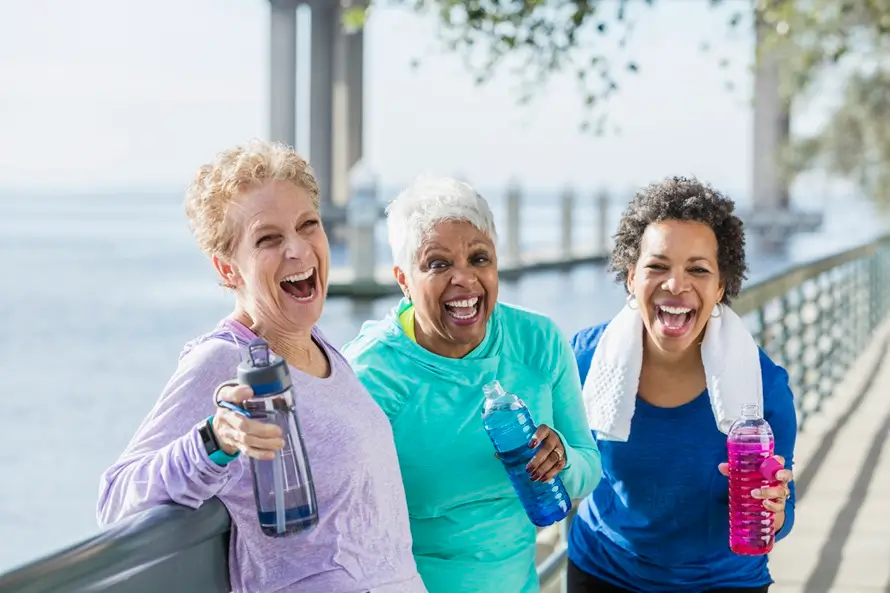Preventing Dehydration in Older Adults
Have you had enough water today? For most adults, the answer is probably no. Many people deal with minor symptoms of dehydration, but older adults are even more susceptible. Dehydration in older adults can lead to serious health complications beyond just extreme thirst. Fortunately, most of these symptoms can be prevented with the right approach. Here’s what you need to know about dehydration in older adults and how to help your older loved ones avoid it.
What Are the Symptoms of Dehydration?
Most people have experienced mild dehydration at some point, but severe dehydration symptoms can have a significant impact on the body. Prolonged dehydration can lead to dizziness, confusion, and, in extreme cases, organ failure. In older adults, even mild dehydration can trigger significant health problems, including:
- Decreased ability to regulate body temperature
- Low blood pressure
- Decline in cognitive function
Why Older adults Face Higher Dehydration Risks
Anybody can be dehydrated, but the risk is greater for older adults. Here are some age-related changes and circumstances that might increase the chances of dehydration:
- Reduced Thirst—As we age, we naturally lose some of our sensations, and thirst is one of them. Older adults may not feel thirsty even when their bodies desperately need fluids. Combined with busy daily routines or cognitive decline, older adults may simply forget to drink water regularly.
- Changes in Kidney Function—With age, the kidneys become less efficient at conserving water. This means older adults lose more fluids through urination, even when their bodies are already running low on water reserves. The kidneys also respond more slowly to dehydration signals, which could delay the body’s natural conservation mechanisms.
- Medication Side Effects—Many common medications prescribed to older adults can increase the risk of dehydration. Diuretics, blood pressure medications, and certain antidepressants may all lead to increased fluid loss or interfere with the body’s ability to retain water. Some medications also reduce appetite and thirst, making it even more difficult to keep up with proper water intake.
- Mobility Issues—Physical limitations may make it difficult for older adults to access water easily throughout the day. Arthritis, balance problems, or weakness can make frequent trips to the kitchen more challenging than they used to be.
How Much Fluid Do Older Adults Need?
Most healthy older adults should consume approximately six to eight cups of fluid daily, though individual needs vary based on activity level, climate, and overall health status. For example, older adults with certain medical conditions may need more fluids than others. Folks living with kidney disease or heart failure should work with their healthcare providers to figure out some reasonable goals.
Practical Strategies for Preventing Dehydration
The good news is that dehydration in older adults can be prevented with a proactive approach. If you address the challenges surrounding fluid intake, you can ensure your loved one gets the nourishment they need. Try these strategies to avoid symptoms of dehydration:
1. Establish Regular Drinking Routines
Don’t underestimate the power of a clear routine! Start by creating a schedule for fluid intake throughout the day. Plan for a glass of water in the early morning, as well as beverages for each meal. You might even set reminders for mid-morning, afternoon, and evening glasses of water. If your loved one isn’t tech-savvy, smartphone reminders might not be your best bet. In that case, use pill organizers to help. In place of a pill, insert a small note to remind them to drink water!
Some older adults find that linking hydration to existing routines is helpful. They might drink water whenever they take their medication, watch the news, or check the mail. Behavioral cues make it easier to remember to hydrate without relying on thirst.
2. Make Water More Appealing
Plain water can become boring, and sometimes, you just don’t want to slog through another glass. If this stops your loved one from getting hydrated, add natural flavor enhancers like lemon slices, cucumber, mint, or frozen berries to their water. This makes things more interesting and may even have them looking forward to water intake. Herbal teas, broths, and diluted fruit juices also increase daily fluid intake while providing variety.
Keep beverages at preferred temperatures. Some older adults prefer room temperature drinks, while others enjoy ice-cold water. Having options readily available increases the likelihood of regular consumption throughout the day.
3. Make Water More Accessible
Place water bottles or cups in multiple locations around the home where your loved one tends to spend time. Keep beverages on bedside tables, near favorite chairs, and in easily accessible kitchen locations. If your loved one has mobility issues, consider getting them an insulated cup with straws or special handles that make drinking easier. Portable water bottles with measurement markers can also help track daily intake and provide visual reminders to keep drinking. Choose lightweight bottles that are easy to carry and refill as needed.
4. Include Hydrating Foods in Their Diet
Try boosting your loved one’s fluid intake with things other than water. Many fruits and vegetables have high water content and contribute significantly to daily fluid intake. Watermelon, oranges, grapes, lettuce, tomatoes, and soups all provide hydration along with important nutrients. You could even get creative and make frozen fruit pops or smoothies to really make hydration fun.
5. Look for Signs of Dehydration
Even with a strategic approach, mild dehydration can still happen occasionally. Talk to your loved one about the early signs of dehydration and watch for them yourself. For one, light yellow urine typically indicates good hydration, while dark yellow suggests fluid intake needs to increase. Other early indicators include dry mouth, decreased urination frequency, and mild fatigue. If you’re especially worried about dehydration, encourage your loved one to keep a log for the first few weeks where they record their daily fluid intake. Once water consumption becomes routine, this may no longer be necessary!
Build Sustainable Hydration Habits with SmithLife Homecare
If you need support as you work to prevent the symptoms of dehydration, look to SmithLife Homecare. We offer personalized in-home support for older adults with a variety of conditions and challenges. We’ll work closely with you and your loved one to create a hydration plan that makes sense for everyone. Get in touch with our Maryland-based team today to learn more.

